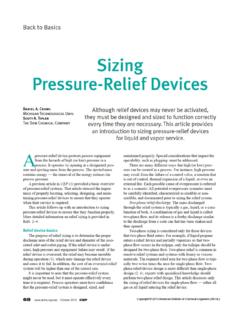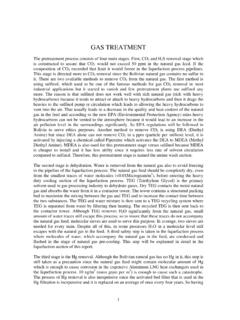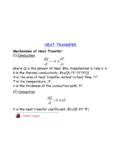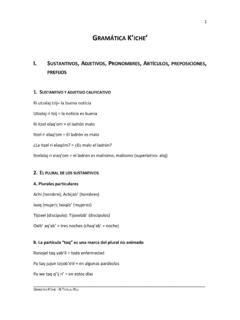Transcription of P Drosophila melanogaster in - ou.edu
1 Dros. Inf. Serv. 92 (2009) Research Notes 73 Occurrence of P element in natural populations of Drosophila melanogaster in Ukraine. Rozhok, Anrii I., Oleksii Bilousov, Oleksandra V. Protsenko, Olga Zhuk, and Iryna A. Kozeretska. Taras Shevchenko National University of Kyiv, Glushkova str., 2/12, Biology Department, room 465; e-mail: Abstract Using PCR and sequencing we have demonstrated the presence of P elements in genomes of Drosophila melanogaster from natural populations of Ukraine. The degree of gonadal reduction revealed indirectly indicates low or, in some cases, zero activity of the mobile element in the inspected natural populations of Drosophila .
2 All studied populations have been found to represent the M cytotype. In this study, we have shown for the first time that P element, absent two decades ago, has invaded Ukrainian populations of Drosophila melanogaster . This invasion is part of the worldwide expansion of P element in Drosophila melanogaster . In Ukraine, an initial stage of the invasion has been suggested to occur, and further evolution of the M cytotype into P cytotype is expected. Keywords: P element, Drosophila melanogaster Introduction Recent data suggest that according to different estimates up to 22 percent of the Drosophila melanogaster genome is represented by mobile elements (ME) pertaining to diverse families (Kapitonov and Jurka, 2003).
3 The P element family (autonomous ME, long) includes MEs capabale of promoting so-called P-M hybrid disgenesis under a certain crossing scheme (Kidwell, 1985). Hybrid disgenesis is usually accompanied by such effects as high gonadal reduction frequency, elevated rates of mutation, and recombination in males (Broadhead et al., 1977). Based on the presence of P element and the hybrid disgenesis manifestation all known fruit fly lineages are divided into three major types: a) no P element (M cytotype), b) P element present (P and Q cytotypes) (Kidwell, 1985). Beside these three, there are also two variants: M (the M type yet containing P element) and P , the P strain unable to repress the effects of hybrid dysgenesis.
4 Hybrid dysgenesis usually manifests itself in reduction of the size and stage of development of gonads in Drosophila of the F1 generation from crosses between P-element-containing males and females lacking P element, and is the result of P element movement in the fly germ cells. Although the exact nature of the process of P element movement suppression (as a defensive mechanism against GD) is still poorly understood, the two current hypotheses (that are not mutually exclusive) link it either to the activity of suppressor proteins produced by incomplete copies of P elements (Rio, 1990) or the activity of Piwi-interacting (pi) RNAs (Simmons et al.)
5 , 2007; Jensen et al., 2008). Whatever the mechanism, flies inherit maternally a means to suppress movement of P element, and this is the basis of their division into so-called cytotypes. Present day cytotypes are distinguished depending on the ability of flies to induce (tested on males) or repress (tested on females) active movement of P elements. In this way, P cytotype lineages have both inducing and repressing abilities, P cytotype strains have only inducing ability, Q strains have only repressing ability, and M cytotype flies have Research Notes Dros. Inf. Serv. 92 (2009) 74 neither (see in Itoh et al.
6 , 2007) and are devoid of P elements. M cytotype defines flies that lack both inducing and repressing abilities, but still contain P elements (Bingman et al., 1982). In laboratory lineages and natural populations of Drosophila collected before 1950, P element has not been detected (Kidwell, 1983). Its invasion of the Drosophila melanogaster genome is believed to have started somewhere in the middle of the twentieth century in the Caribbean or southeastern North America, probably originating through a horizontal transfer from D. willistoni (Daniels et al., 1990; Clarck and Kidwell, 1997; Itoh et al.
7 , 2007). By the 1980s, the invasion had spread all over the world including Europe, but it hadn t been found to occur in populations from the former Soviet Union and Australia (Kidwell, 1983; Zakharov, 1984). In the 1990s, it was detected in Japanese populations (Gamo et al., 1990). Concerning Ukraine, a work published in 2006 demonstrated the presence of incomlete copies of this element in a natural population from Uman collected in 1983 (Kovalenko et al., 2006). However, no detailed research on ME in natural populations of Drosophila in Ukraine has been carried out so far. The aim of the present study was to investigate the occurrence of P element in natural populations of Drosophila melanogaster in Ukraine.
8 Figure 1. Fly collection sites. Materials and Methods We studied lineages of Drosophila melanogaster originating from different natural populations collected at several locations in Ukraine in 2008 and 2009 (Figure 1), as well as the Dros. Inf. Serv. 92 (2009) Research Notes 75laboratory line Canton S, a wild type lineage that may sometimes not contain the mobile P element (Roberts, 1986), being part of the collection of General and Molecular Genetics Department of Taras Shevchenko National University of Kyiv and courteously granted by Genetics Department of Lomonosov Moscow State University in 1992.
9 Cytotype determination was based on the gonadal dysgenesis (GD) assay and included two kinds of crosses (Kidwell et al., 1977; Engels and Preston, 1980) female Canton-S (M cytotype) were crossed with wild caught males to test the GD induction potential in wild flies (cross A), and wild females were crossed with Harwich (P cytotype) males to test the repression potential of the tested wild flies (cross B). Cytotype was determined as described in Itoh et al. (2001). Gonad biotomy and visual inspection of their developmental status was used to measure GD.
10 Only unilateral and bilateral ovary and seminal gland reduction were counted. For each population, 50 individuals of each sex were analyzed. Percent ratio of GD was calculated using the formula %GD = %GD(1) + %GD(2), where %GD(1) stands for the proportion of individuals with unilateral reduction of the ovary/seminal gland taken as a percent of the whole sample; %GD(2) means the proportion of individuals with bilateral gonadal reduction taken as a percent of the whole sample. We used a 437 bp region of P element DNA sequence to look for possible base substitutions and confirm the results of P element detection by PCR.













